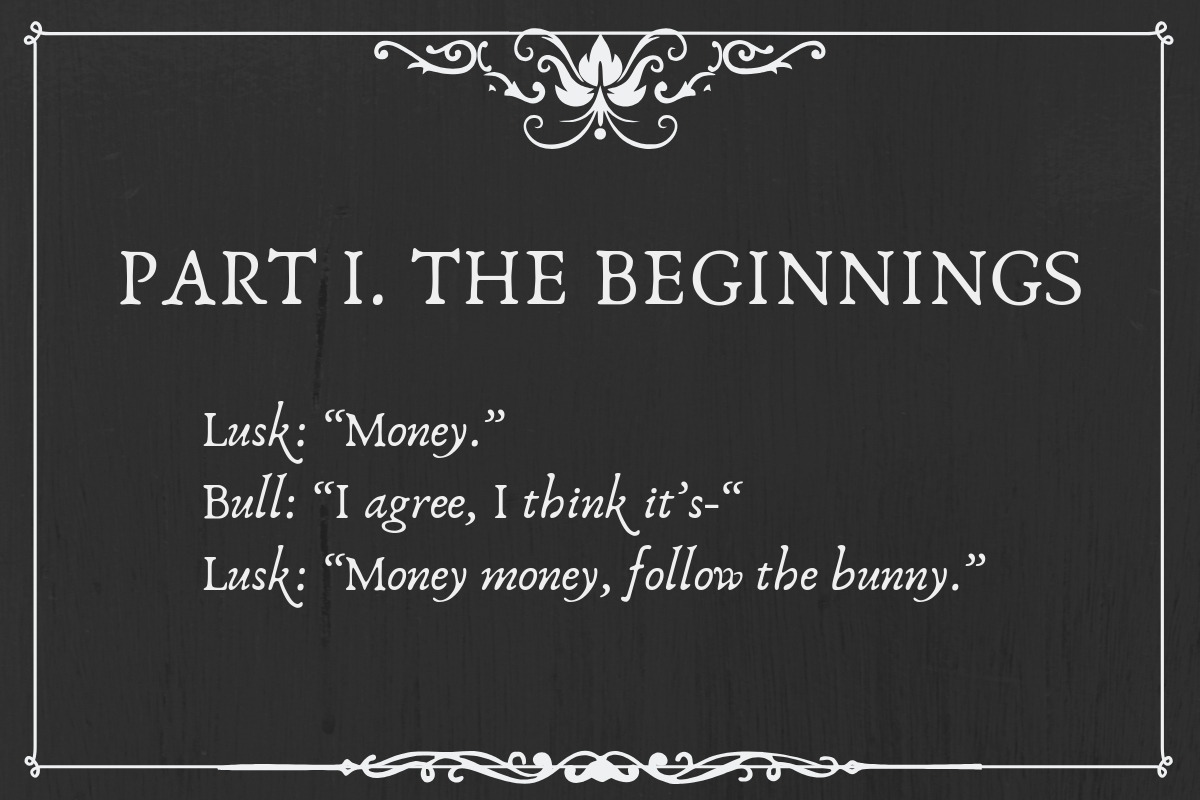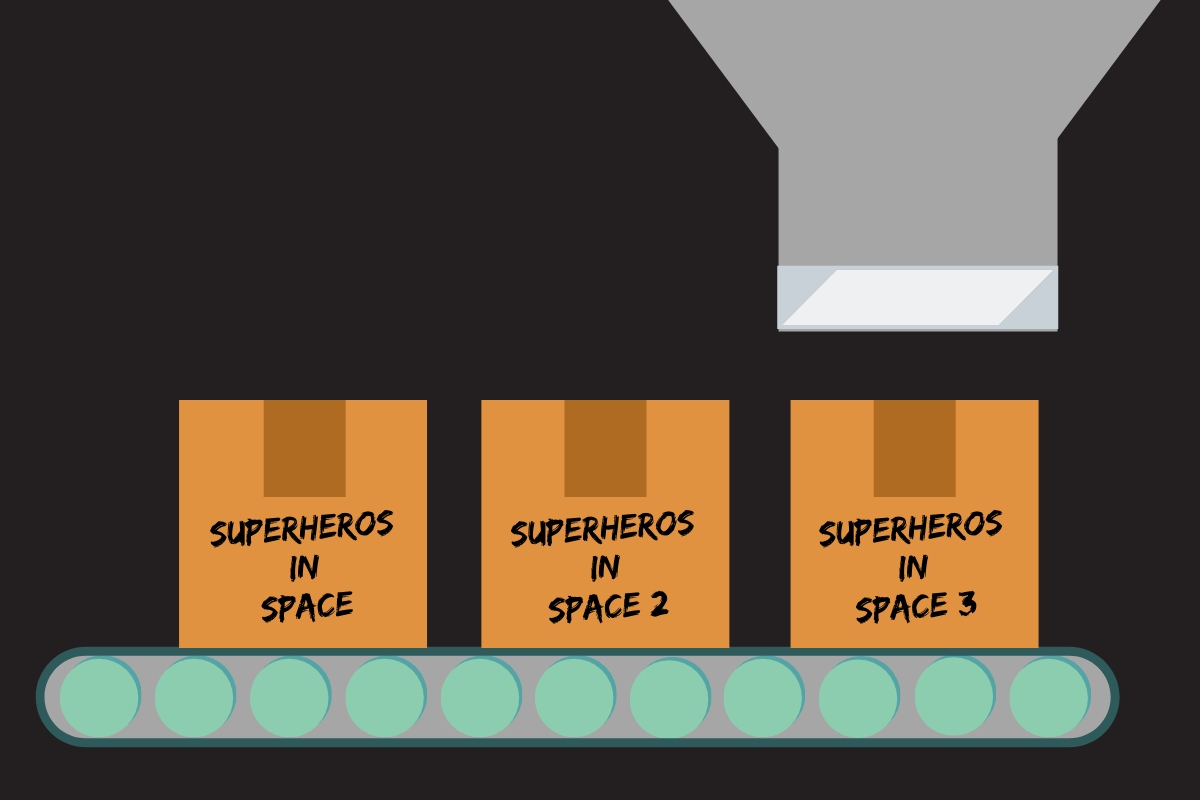
Committed to graduate in 2020, Laura Madler is Editor-in-Chief and fourth year staff writer for the Lion's Roar. Outside of class, she can be found twirling...
March 19, 2019
When exploring the topic of movie universes and sequels, it is necessary to consult the professionals. In Part I of the “Death of Film” series, creators and hosts of the LaF Podcast Richard Lusk and Ryan Bull discuss the origin story of movie universes and their growth in the box office.

Go open a new tab, type in the name of your nearest movie theater, and look at the list of movies playing. What do you see? Do you notice something a little strange? Look closer. I’ll bet there’s at least one Marvel movie, more sequels or installments in a series, and maybe a Disney “live-action” remake for good measure.
This isn’t psychic vision here- it’s the pattern of the modern movie industry. Original films are small potatoes. Instead, theaters are looking at three live-action Disney movies, three new MCU movies, and unavoidable scores of sequels just in the next six months after this article’s publication. This begs the question- how did this happen to film?
The origin of the sequel is not hard to pin down. When a movie is successful and the story can be extended past one release, logically production companies will follow up films with a sequel. After all, if you already have a fan base for a movie, it’s even easier to make money off the next installments because there’s a guaranteed audience. Sequels now are often planned before the first movie even comes out, with most studios aiming to hit the jackpot “franchise” status with every new idea.
“It used to be sequels were where you make your money, and you still do, but the problem with the sequel is that it comes out every two to three years,” explained Bull. “Now someone goes to the movies and you show them a trailer for something that’s coming out in four months; you sell them on the next thing before they’ve even seen the thing they came to watch.”
“The traditional trailers used to appear at the end of movies, now they’re generally at the beginning or online,” Lusk added. “Now with the Marvel Universe that you mentioned earlier, they have those stingers and the mid-credits scene sequences, and they kind of link together all the storylines and they sort of generate interest so there’s this perpetual machine [of sequels].”

Nowadays, studios have extended this moneymaking logic even further, creating massive universes – like the infamous Marvel Cinematic Universe, or the new kid on the block, JK Rowling’s Wizarding World. These franchises can support multiple movies in theaters at the same time within the same year, layering on characters, crossovers, and callbacks to other aspects of the universe to keep fans coming to the movies.
The first instance of the movie universe is hard to pin down. Some people, like horror film fanatic Bull, trace crossover entertainment to the horror films of the late 20thcentury, which used hints of other characters to build anticipation for sequel movies (even if those films didn’t come into fruition until decades later). Others, like Lusk, see slight crossover happening even earlier, like the combination of literary heroes Cyrano de Bergerac and d’Artagnan the Musketeer in the campy 1964 French adventure flick, Cyrano et d’Artagnan. These are not quite at the successful “universe” level of franchise function, however. Many film buffs generally agree on Star Wars being one of the first franchises to latch onto the universe shtick, starting with a trio of movies that launched comics, books, video games, cartoons, 6 more feature films, and an ill-fated Christmas special.
“That would be the most obvious example because those cartoons came out in the 90s, right, and then you had the prequels. So you had, not just in terms of movies, but just in terms of like fiction and fictional representations, like cartoons, like comic books, and novelizations of the movies, and they took different characters in different directions,” Lusk reasoned.
Even the silver screen is getting in on the action. The CW notoriously houses a host of intertwined DC Superhero shows in their “Arrowverse,” named for the Green Arrow. Netflix supports a bulk of Marvel’s supporting tv series, and the production company joined efforts with the CW to create the incredibly macabre Archie Comics universe, which currently supports the series Riverdale and Chilling Adventures of Sabrina.
“They don’t want you to wait a year for the next season to come out,” said Bull on the constant stream of content. “They want to sell you on Riverdale. When you finish Sabrina, then go watch Riverdale. By the time you finish with Riverdale, hopefully, we’ll have another season of Sabrina ready to go for you.”
The constant churning out of movies and series installments is a natural step in modern film as studios amass more resources and technology available to keep up with demand. After all, the field of entertainment is a field of insatiable appetites- fans want more content, moviemakers want more money and publicity, and the companies behind it all want the most profitable franchises possible. It’s an appetite, Lusk said, that is only satisfied by these universes, sometimes valuing quantity above quality. He likens movie universes to fast food, which isn’t meant to be remarkable, but just adequate enough for mass consumption-

“I mean it’s the McDonald’s effect. People want to be able to get the same hamburger every time they go to McDonald’s and they don’t even realize that it’s not very good.”
Movies are in a period of unchecked and unparalleled growth. Expansion into series, universes, and reboots is consistently popular and bankable. From the humble origins of three-part series and single-story superhero movies comes the great hulking beast of 21st century film production.
How do the movies look today?

Committed to graduate in 2020, Laura Madler is Editor-in-Chief and fourth year staff writer for the Lion's Roar. Outside of class, she can be found twirling...